Prednisone/Prednisolone Side Effect Risk Calculator
Your Medication Details
When doctors prescribe prednisone or prednisolone, it’s usually because something in your body is overreacting. Your immune system is attacking your joints, your lungs, your skin - or worse. These drugs shut down that chaos fast. But they don’t just calm inflammation. They touch nearly every system in your body. And that’s where the real story begins: not in the prescription bottle, but in what happens after you take that first pill.
How Prednisone and Prednisolone Work - And Why They’re Not the Same
Prednisone and prednisolone are nearly identical in effect, but not in how your body handles them. Prednisone is a prodrug. That means it’s inactive until your liver turns it into prednisolone - the real active form. If your liver is healthy, this conversion happens smoothly. But if you have cirrhosis, hepatitis, or even mild liver damage, that conversion slows down. In severe cases, up to two-thirds of the prednisone you take never becomes active. That’s why doctors often switch to prednisolone outright in patients with liver disease. No guesswork. No delay. Just direct action.
For everyone else, 5 mg of prednisone equals 5 mg of prednisolone in strength. No difference in how well they work. But there are subtle differences in how they feel. Some people report more mood swings with prednisone. Others notice more stomach upset with prednisolone. These aren’t major differences - just small variations seen across large groups of patients. The real issue isn’t which one you get. It’s how long you stay on it, and at what dose.
Short-Term Side Effects: The First Few Weeks
If you’re on these drugs for less than three weeks, you’re in the short-term zone. Most side effects here are annoying, not dangerous - but they can be intense.
- Insomnia: Nearly 7 out of 10 people can’t sleep. Steroids spike cortisol levels, which naturally rise in the morning. Taking your dose after noon? That’s like pouring fuel on a fire. Doctors recommend taking it before 2 p.m. - and sticking to it. That simple change cuts sleep problems by more than half.
- Increased appetite and weight gain: You’re not lazy. You’re not weak. Your brain is being hijacked. Steroids trigger hunger signals. You crave sugar, salt, carbs. One patient on Reddit described eating an entire pizza at 2 a.m. and not feeling guilty. That’s the drug talking.
- Mood changes: From euphoria to rage to crying for no reason. About 1 in 5 people get noticeable mood swings. Some feel invincible. Others become paranoid. There are real reports of people calling 911 thinking their apartment was crawling with spiders - none were there. At doses above 40 mg, psychosis is a documented risk.
- Fluid retention and swelling: Your face might puff up. Your ankles swell. Your rings don’t fit. This is sodium and water retention. It’s temporary, but it’s ugly. And it raises blood pressure. That’s why doctors tell you to cut salt. No more chips, canned soup, or takeout.
- Headaches and dizziness: These are common. Not because of brain damage. But because your blood pressure is up, your electrolytes are off, and your body is adjusting.
Here’s the good news: most of these fade within days of stopping. One study found 78% of people saw their side effects vanish within two weeks of quitting. That’s not nothing. But if you’re on more than 20 mg a day, don’t assume you’re safe. Blood sugar can spike fast. Non-diabetics on high doses have a 54% chance of developing steroid-induced hyperglycemia. That’s why checking your glucose - even if you’ve never had diabetes - is critical.
Long-Term Side Effects: The Silent Damage
When you’re on prednisone or prednisolone for more than three months, things change. The side effects stop being temporary. They become permanent.
- Osteoporosis and fractures: This is the biggest hidden threat. Steroids stop bone-building cells from working. They also make your body leak calcium. After two years of use, over 60% of patients show signs of bone loss. Some never recover. That’s why doctors check bone density every year if you’re on more than 5 mg daily for over three months. Calcium and vitamin D help - but they’re not enough. Weight-bearing exercise (walking, lifting) can reduce bone loss by 22%. Bisphosphonates are often prescribed, but even then, nearly half of fractures still happen.
- Cataracts and glaucoma: Your eyes don’t lie. Long-term use increases cataract risk by 30-50%. Glaucoma - pressure on the optic nerve - can sneak up silently. Annual eye exams aren’t optional. They’re life-changing.
- Adrenal suppression: Your body stops making its own cortisol. It forgets how. If you stop the drug too fast, your body can’t jump-start itself. That’s adrenal crisis: low blood pressure, vomiting, confusion, collapse. It can kill. Tapering isn’t a suggestion. It’s a requirement. Minimum two weeks. Often longer. Never skip your taper.
- Diabetes: Even if you’ve never had it, steroids can trigger it. The liver dumps glucose. Muscles stop using it. Pancreas can’t keep up. Some people reverse it after stopping. Others become diabetic for life.
- Muscle weakness: Your legs feel like jelly. You can’t climb stairs. That’s steroid myopathy. It’s not your age. It’s the drug. Strength training helps, but it’s slow. Recovery can take months.
- Peptic ulcers and pancreatitis: Steroids thin the stomach lining. They also raise fat levels in your blood. That’s why proton pump inhibitors (PPIs) are standard for anyone on more than 5 mg daily for over four weeks. Without them, ulcer risk jumps from 1% to over 8%. That’s a massive drop - just by adding one pill.
And then there’s the face. The moon face. The buffalo hump. The acne. The excessive sweating. These aren’t myths. They’re real. Parents of children on these drugs report these changes as the most distressing part. But here’s what they also say: within 10 days of stopping, the swelling fades. The skin clears. The face returns. That’s hope.
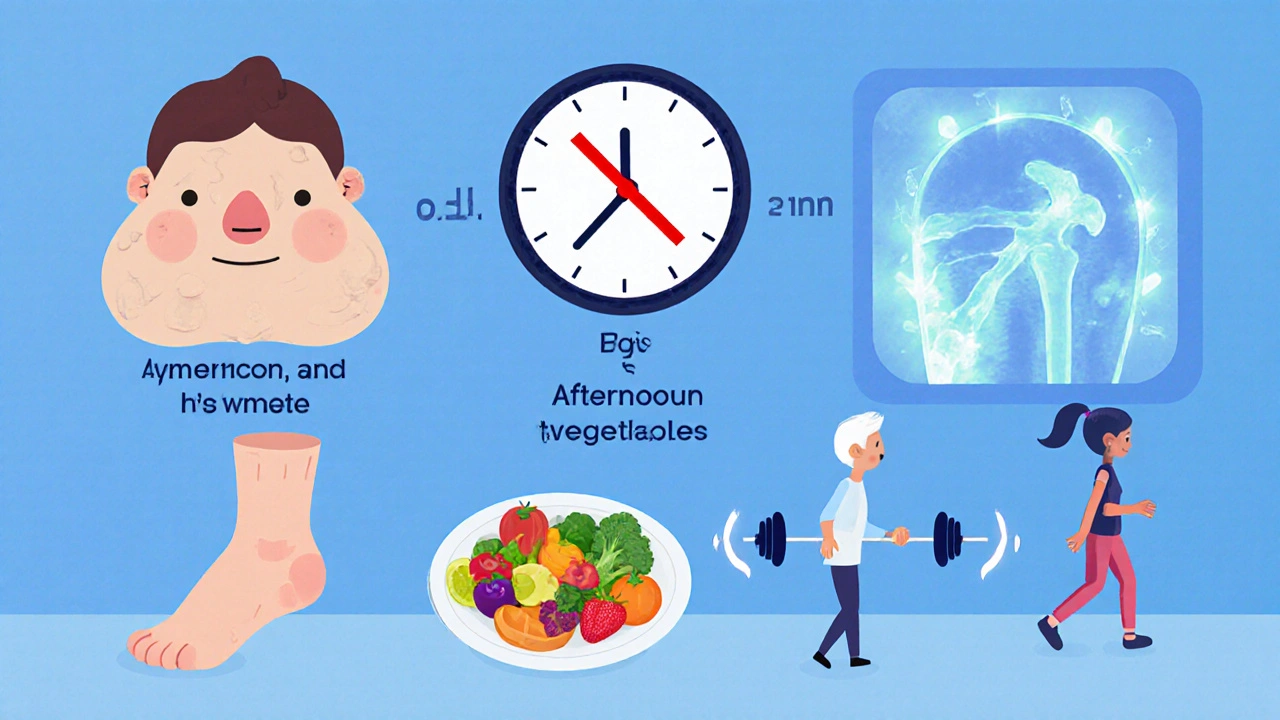
Who Gets Which Drug - And Why
It’s not random. Doctors choose based on your body - not your preference.
- Prednisone: Preferred for adults with autoimmune diseases like lupus. It’s cheaper. It’s widely available. Most people’s livers handle it fine.
- Prednisolone: The go-to for kids, liver patients, or anyone with poor liver function. It works faster. No conversion needed. In pediatric inflammatory bowel disease, 63% of specialists choose it over prednisone.
- Delayed-release prednisone (Rayos, Deltacorten): Newer versions that release at night. Designed to mimic your body’s natural cortisol rhythm. Early data shows 32% fewer mood swings and better sleep. Still expensive, but worth asking about if you’re struggling with insomnia or anxiety.
There’s no "better" drug. Only the right one for your body.
How to Protect Yourself
If you’re on these drugs, you’re not helpless. You have power - if you use it.
- Take it early: Before 2 p.m. Always. No exceptions.
- Watch your sodium: Under 2,000 mg a day. No processed food. No soy sauce. No pickles. Eat more bananas, spinach, sweet potatoes - high in potassium to fight low potassium from steroids.
- Move your body: Walk. Lift light weights. Do yoga. Even 20 minutes a day helps your bones, muscles, and mood.
- Get your eyes checked: Every year. No excuses.
- Get a bone scan: If you’ve been on it over 3 months at 5 mg or more.
- Never skip or double a dose: Missing a dose can trigger adrenal crisis. Doubling it can cause toxicity. Use a pill tracker app. They improve adherence by 37%.
- Ask about alternatives: Biologics like tocilizumab have cut long-term steroid use by 28% in rheumatoid arthritis. If you’re on steroids for more than six months, ask your doctor: "Is there another option?"
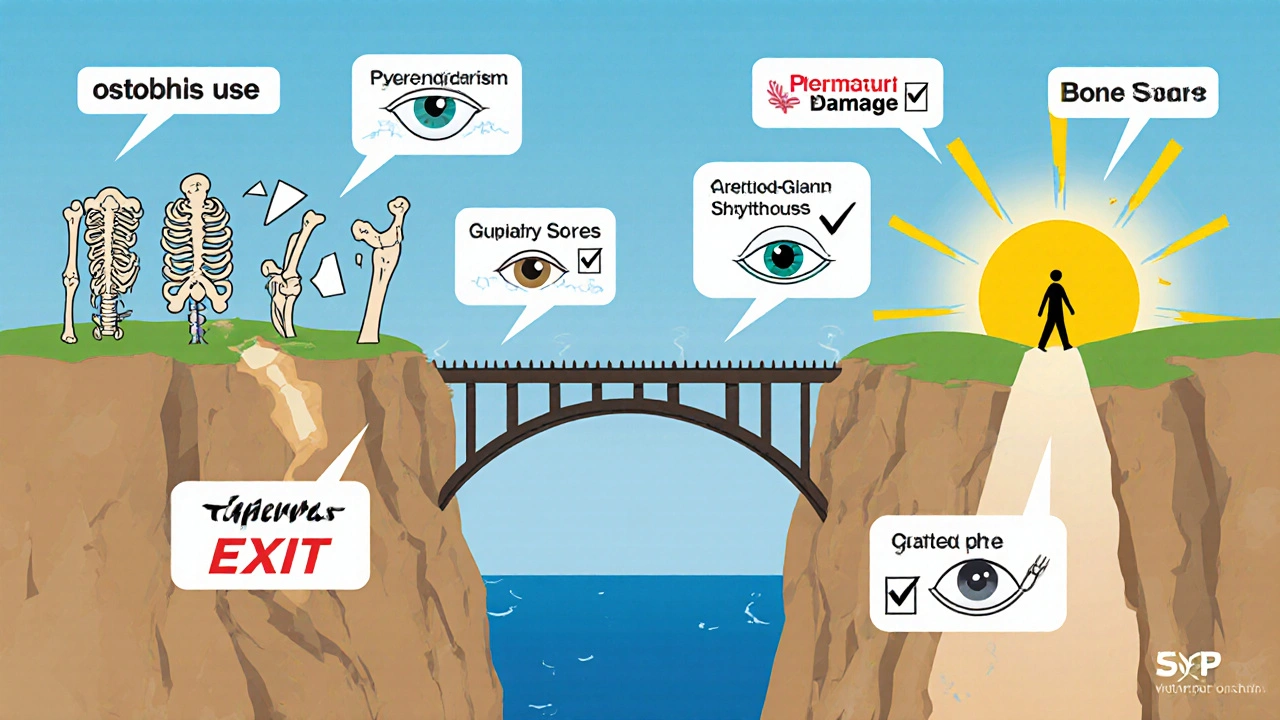
When the Benefits Outweigh the Risks
Let’s be clear: these drugs save lives. In giant cell arteritis, 92% of patients improve with steroids - only 58% do with placebo. In severe asthma attacks, lupus flares, or autoimmune hepatitis, they’re the only thing that works fast. Without them, people die.
The goal isn’t to avoid them. It’s to use them wisely. Short. Low. Monitored. And then - as soon as possible - out.
Most people don’t need to be on them for years. But if you do, you need a plan. A team. Blood tests. Bone scans. Eye exams. Diet changes. Exercise. And a doctor who listens.
These drugs aren’t evil. They’re powerful. And like any powerful tool, they demand respect.
Can prednisone and prednisolone be used interchangeably?
Yes, at equal doses - 5 mg prednisone equals 5 mg prednisolone in effect. But prednisone requires liver conversion to become active. If you have liver disease, prednisolone is preferred because your body can’t convert prednisone properly. In healthy people, either works fine. Your doctor will choose based on your liver function, age, and condition.
How long do side effects last after stopping?
Short-term side effects like insomnia, appetite changes, and mood swings usually fade within 1-2 weeks after stopping. Fluid retention and weight gain drop quickly once you’re off the drug. Long-term effects like bone loss, cataracts, or adrenal suppression may be permanent. That’s why tapering and monitoring are critical - you want to avoid these in the first place.
Is it safe to take prednisone for more than a month?
It’s not about safety - it’s about risk. Taking prednisone for more than a month increases your chance of serious side effects exponentially. At doses above 7.5 mg daily for over 3 weeks, 40% of patients develop at least one major side effect. Doctors aim for the lowest dose for the shortest time. If you’re on it longer, you need regular bone, eye, and blood sugar checks - and a plan to get off it.
Why do I feel so anxious or depressed on prednisone?
Steroids affect brain chemicals like serotonin and dopamine. They also raise cortisol levels, which can overstimulate the nervous system. This can cause anxiety, irritability, or even psychosis at high doses. It’s not "in your head" - it’s the drug. If you feel paranoid, have panic attacks, or think about harming yourself, tell your doctor immediately. Dose reduction or switching medications may help.
Can I drink alcohol while taking prednisone or prednisolone?
It’s not recommended. Alcohol increases stomach irritation and raises your risk of ulcers - already higher from steroids. It also affects your liver, which is already busy converting prednisone. Plus, both alcohol and steroids can raise blood pressure and blood sugar. Mixing them makes side effects worse and recovery harder. If you drink, talk to your doctor. They may advise complete avoidance.
Are there natural alternatives to prednisone or prednisolone?
There are no natural substitutes that match the power of these drugs for acute inflammation. Supplements like turmeric or omega-3s may help reduce mild inflammation over time, but they won’t stop a flare of lupus, vasculitis, or severe asthma. Biologics like tocilizumab are the real alternatives - but they’re expensive and not for everyone. Don’t replace steroids with herbs. Work with your doctor to find the safest, most effective path forward.
What should I do if I miss a dose?
If you miss one dose, take it as soon as you remember - unless it’s close to your next scheduled dose. Never double up. Missing doses can trigger adrenal crisis, especially if you’ve been on it for more than a few weeks. If you’re unsure, call your doctor or pharmacist. Use a pill tracker app to help avoid missed doses.
Can prednisone or prednisolone cause weight gain that won’t go away?
The fluid retention and increased appetite cause weight gain that usually reverses after stopping. But long-term use can change how your body stores fat - especially around the abdomen, neck, and face. This fat may not disappear quickly, even after stopping. Combining a healthy diet and exercise helps. But the best defense is avoiding long-term use altogether.
Final Thought: The Balancing Act
These drugs are not the enemy. They’re a bridge. A fast, powerful bridge over a dangerous river. But you don’t build your house on the bridge. You cross it - carefully - and get to the other side.
Use them as directed. Monitor your body. Ask questions. Push for alternatives when time allows. And never, ever stop them cold.
There’s a life after steroids. But you have to plan for it - before you even start.

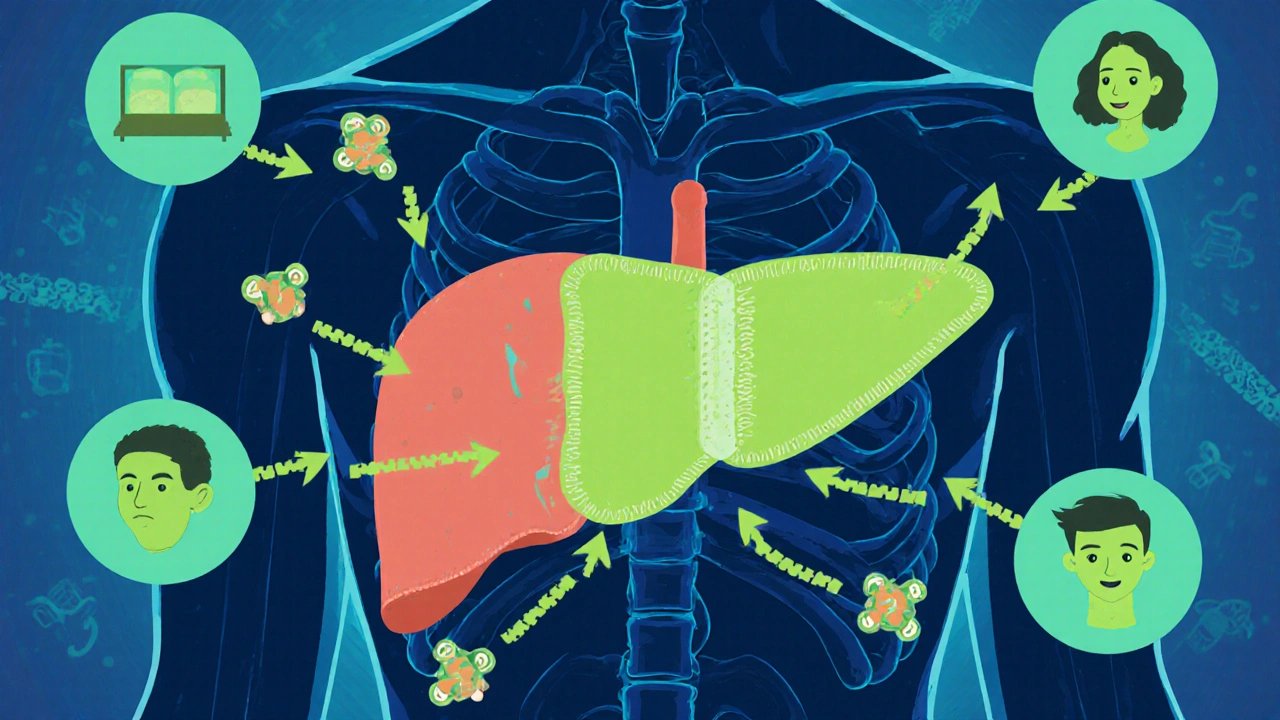
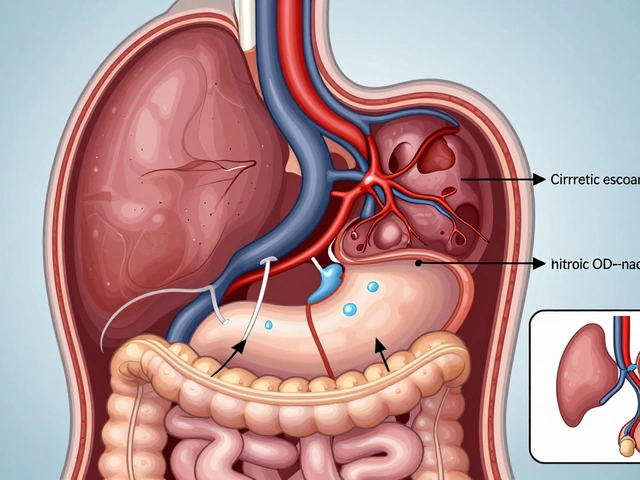
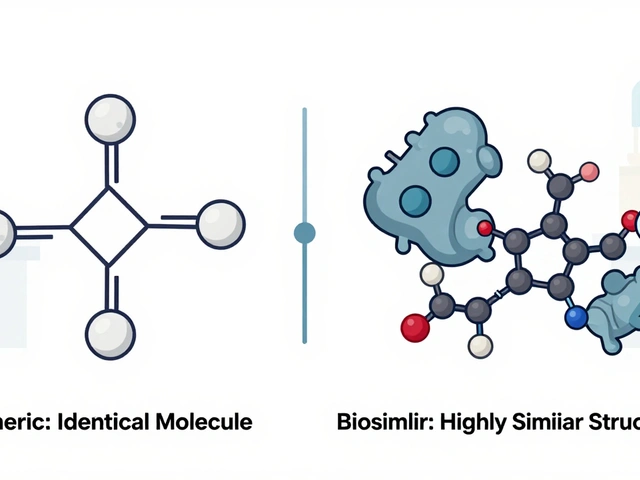
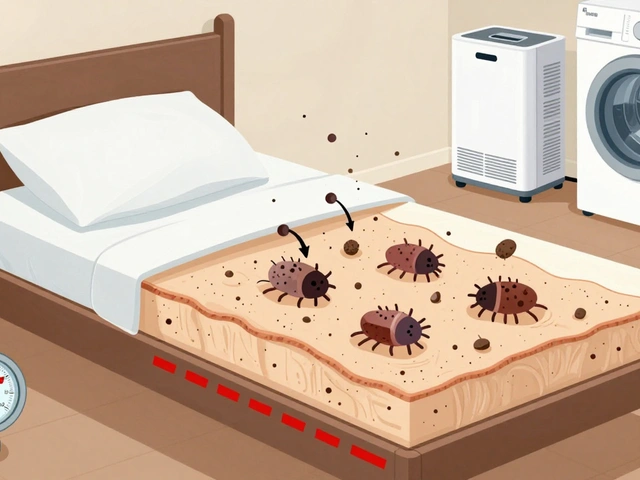
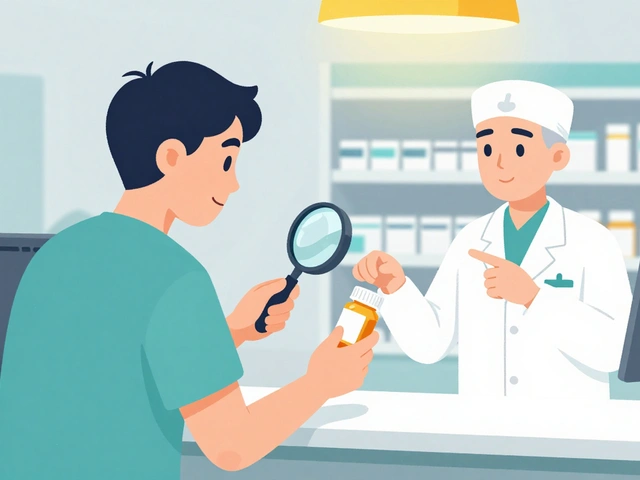
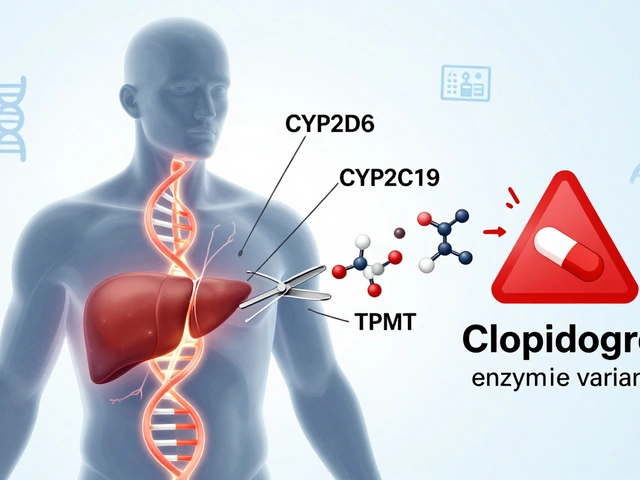
15 Comments
Sarah Cline
Just started 10mg for a flare and already feel like I’ve been hit by a truck. That pizza at 2 a.m. thing? Yeah, I did that. No regrets. Just… hungry. Always hungry. And no sleep. But hey, at least my rash is gone.
Sierra Thompson
People act like prednisone is some demonic substance, but it’s just a blunt instrument. Evolution didn’t design our bodies to handle synthetic cortisol surges. The side effects aren’t bugs-they’re features of a system overwhelmed. We’re not broken. The drug just exposes how fragile we are.
Alexander Ståhlberg
Let’s be real. If you’re on this for more than six weeks, you’re not being treated-you’re being managed. The system doesn’t care if you get moon face or osteoporosis. It cares that you’re not in the ER. The real tragedy isn’t the drug. It’s that we’ve turned chronic autoimmune disease into a life sentence with steroids as the only handcuffs available.
robert maisha
When you stop prednisone cold you dont just lose the benefits you lose your own ability to function. The adrenal glands dont just restart like a light switch. They forget. And that forgetting is a kind of death. Not of the body but of the rhythm. The natural order. And no pill can bring that back
Robert Andersen
I’ve been on low dose for 18 months. Moon face is real. So is the anxiety. But I’m alive. My kidneys are fine. My lungs work. I’d take the puffiness over a ventilator any day. It’s not ideal but it’s not the end of the world either. Just… different.
Alexis Hernandez
My grandma took this for RA and swore by it. Said it felt like someone turned the volume down on her body. She’d laugh about the ‘steroid belly’ but still eat cookies at 3 a.m. She lived to 92. Maybe the real lesson isn’t avoiding side effects-it’s learning to live with them like a weird roommate you can’t kick out.
Eric Donald
One thing no one mentions: the guilt. You feel like a fraud when you’re euphoric on the drug, then crash into depression. You don’t know if it’s you or the meds. And when people say ‘you seem different’-you don’t know if they mean better or worse. It’s isolating in a way no side effect list captures.
Khaled El-Sawaf
It’s irresponsible to suggest prednisone is merely a ‘bridge.’ For many, it’s a scaffold holding up a collapsing structure. And when the scaffold is removed, the structure fails. The real failure is in medicine’s inability to provide alternatives-not in the drug’s side effects. Blaming prednisone is like blaming a lifeboat for drowning people who refuse to swim.
Musa Aminu
Y’all act like this is some American medical conspiracy. In Nigeria, we pray for this stuff. My cousin had lupus and couldn’t afford biologics. Prednisone saved her life. You think she cared about moon face? She cared about breathing. Stop being soft. This drug is a gift for the poor.
Brenda Flores
Just got my bone scan results-T-score of -2.8. Doctor says I’m at high risk for fracture. I’m 34. I’m on 5mg daily. I’m terrified. But I’m also grateful. I’m alive. I just need to know… what’s the plan? Is this forever? I don’t want to be a walking fracture waiting to happen.
Nawal Albakri
They’re hiding something. Prednisone doesn’t just cause weight gain-it’s linked to the CIA mind control programs. You ever notice how everyone on it gets obsessed with sugar? That’s not biology. That’s programming. And the moon face? It’s a side effect of the surveillance. They want you to look different so you don’t blend in. Wake up.
Megan Oftedal
I know this isn’t the right place to ask but… my sister just started this and she’s crying all the time. She says she doesn’t know why. I’m scared. Is this normal? Should I take her to the ER? I just want her to be herself again.
Okechukwu Uchechukwu
There is a profound irony in modern medicine: we have drugs that can silence an immune system gone rogue, yet we lack the wisdom to teach patients how to live with the silence. We treat inflammation like a war to be won, not a signal to be understood. The side effects are not collateral damage-they are the echo of a system that no longer knows how to regulate itself. We outsourced homeostasis to a pill. And now we wonder why we feel so hollow.
Josh Arce
People say prednisone is bad but what’s worse? Dying or gaining 20 pounds? I’d take the weight. I’d take the acne. I’d take the insomnia. I’d take the moon face if it meant I could walk without my knees screaming. This isn’t a villain. It’s a firefighter who burns down your house to save you.
Eli Grinvald
🥹 I’ve been on this for 8 months. I cried reading this post. I didn’t know I was having steroid psychosis until my roommate said I was talking to the ceiling fan. I thought it was real. I’m so glad I’m not alone. Thank you for writing this.